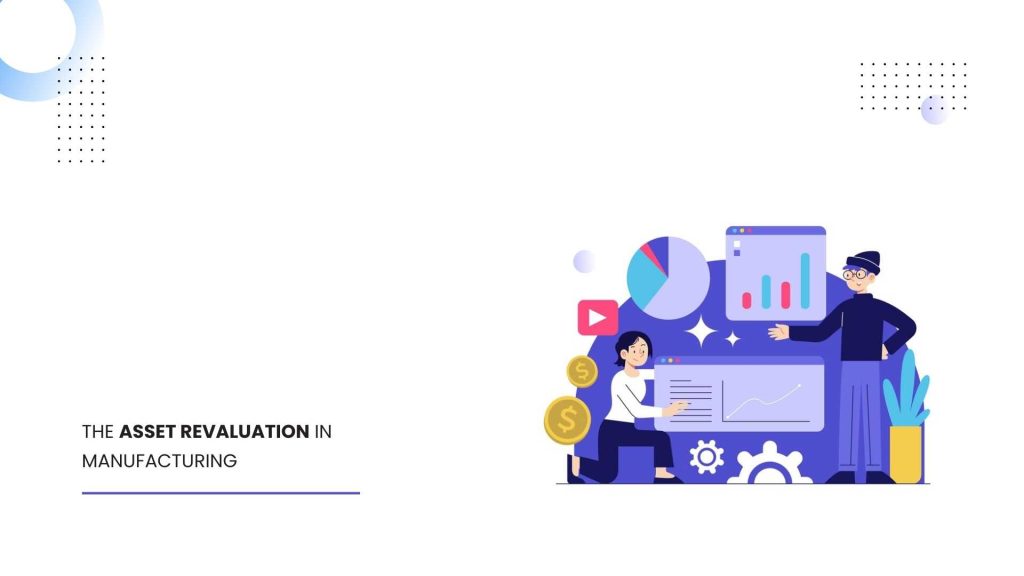Asset revaluation holds immense significance in the dynamic manufacturing landscape, where assets form the backbone of operations. Asset revaluation involves reassessing the value of assets, typically machinery, equipment, and property, to accurately reflect their current market worth. We delve into the intricacies of asset revaluation in manufacturing, its importance, process, benefits, and key considerations.
Importance of Asset Revaluation in Manufacturing:
Accurate Financial Reporting: Asset revaluation ensures that a company’s financial statements accurately represent the current value of its assets, providing stakeholders with transparent and reliable information.
Optimized Asset Utilization: By reassessing the value of assets, manufacturers can identify underutilized or obsolete assets, facilitating informed decision-making regarding repair, replacement, or disposal.
Compliance and Governance: Compliance with accounting standards such as IFRS and GAAP often requires periodic asset revaluation. To maintain regulatory compliance and governance standards.
Facilitation of Strategic Planning: Revaluing assets enables manufacturers to align their strategic plans with the true value of their asset base. Supporting investment decisions, mergers, acquisitions, and divestitures.
Process of Asset Revaluation:
Identification of Assets: The first step involves identifying the assets to be revalued, including machinery, equipment, buildings, land, and other tangible assets.
Engagement of Experts: Manufacturers may engage qualified professionals such as appraisers, surveyors, or valuation experts to thoroughly assess the assets.
Gathering Data: Relevant data, including historical cost, depreciation, market trends, and condition assessments, is collected to facilitate the revaluation process.
Application of Valuation Methods: Various valuation methods, such as the cost approach, market approach. And income approach, are employed to determine the fair market value of assets.
Documentation and Reporting: The results of the asset revaluation are documented in comprehensive reports. Which are then incorporated into the company’s financial statements and disclosures.
Benefits of Asset Revaluation:
Enhanced Financial Transparency: Revaluing assets enhances financial transparency by reflecting the true worth of assets on the balance sheet, providing stakeholders with accurate information.
Improved Decision-Making: With up-to-date asset valuations, manufacturers can make informed decisions regarding asset management, capital allocation, and strategic planning.
Optimized Asset Utilization: Asset revaluation helps identify opportunities to optimize asset utilization. Whether through consolidation, divestiture, or investment in new technologies.
Enhanced Stakeholder Confidence: Transparent and accurate financial reporting instills confidence in investors, creditors. And other stakeholders, bolstering the company’s reputation and credibility.
Regulatory Compliance: Ensuring compliance with accounting standards and regulatory obligations involves regular asset revaluation. Reducing the likelihood of penalties for non-compliance and legal complications.
Key Considerations:
Frequency of Revaluation: Manufacturers must determine the frequency of asset revaluation based on factors. Such as industry standards, regulatory requirements, and changes in market conditions.
Costs and Resources: Asset revaluation incurs expenses associated with hiring experts, gathering data, and preparing reports. Manufacturers should weigh these costs against the benefits of revaluation.
Technological Advances: Rapid technological advancements may necessitate more frequent asset revaluation to account for changes in asset values resulting from innovation and obsolescence.
Impact on Financial Statements: Manufacturers should consider the potential impact of asset revaluation on financial statements. Including balance sheet values, depreciation expenses, and income recognition.
Communication and Transparency: To maintain trust and transparency, clear communication with stakeholders regarding the reasons for asset revaluation. The methodologies employed, and the implications for financial performance.
How Can Acumatica Help You?
Acumatica ERP provides revaluation features that allow organizations to modify the worth of assets, liabilities. And equity accounts to mirror fluctuations in currency exchange rates, market values, or other significant factors. This functionality aids businesses in precisely assessing their assets and liabilities, adhering to accounting regulations, and upholding clear financial documentation.

Vijay comes with a vast experience in ERP and enterprise solutions space with about 20 years of experience in various packaged application like Acumatica, SAP, Orion, Salesforce.com, SugarCRM and, SalesLogix.

